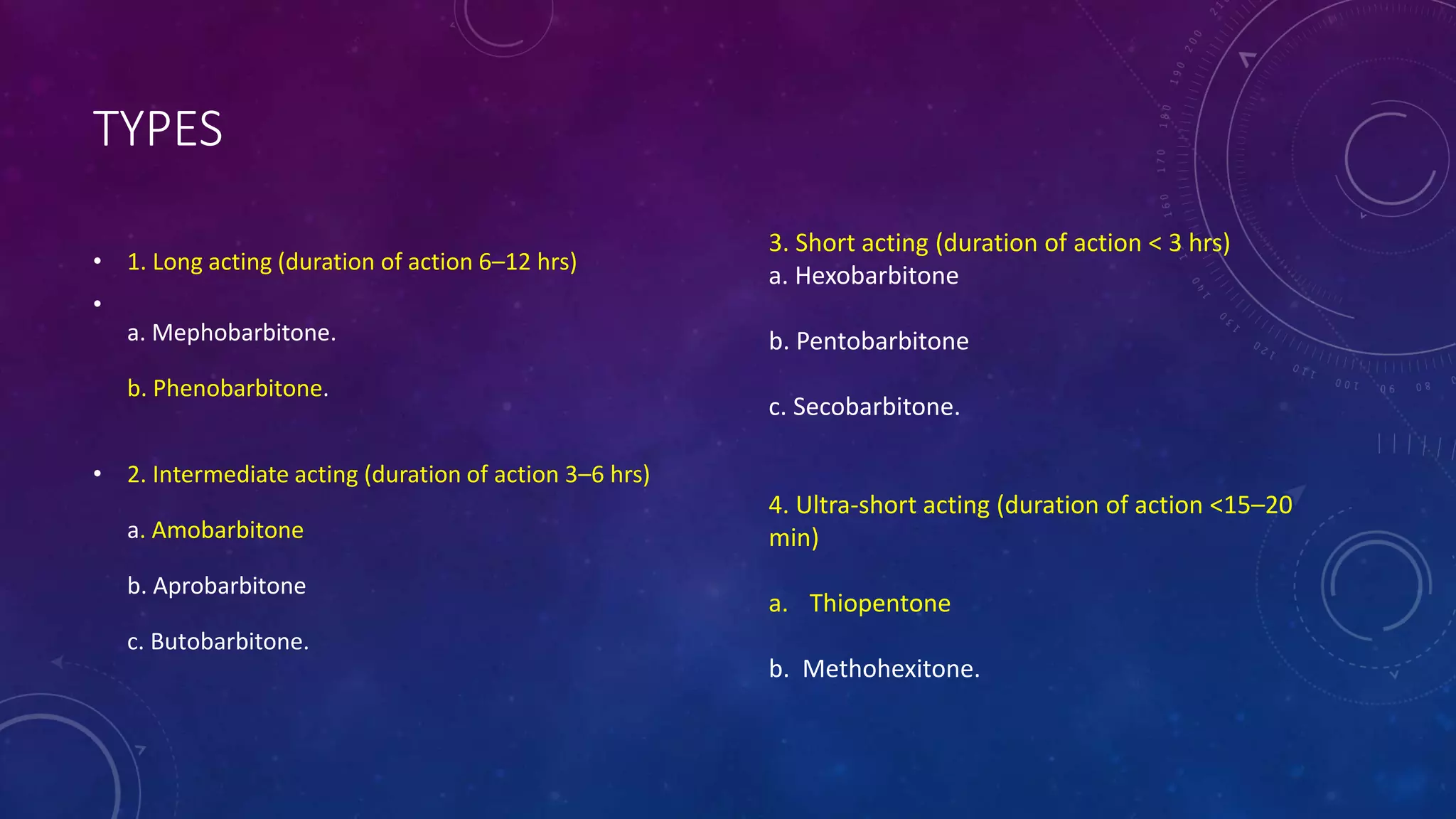- The document discusses the history and development of barbiturates, which were originally synthesized in the 19th century as hypnotic compounds. Barbiturates were widely prescribed as sedatives until being displaced by benzodiazepines in the 1960s due to issues with abuse and overdose.
- Barbiturates are classified based on duration of action and examples are provided. Their pharmacological properties and mechanisms of action in the central nervous system, respiratory system, and elsewhere are described. Adverse effects, signs of toxicity, and treatment approaches for barbiturate poisoning are outlined.





















![Diagnosis
1. Serial plasma levels may be useful in the management of phenobarbitone overdose.
Plasma levels exceeding 8 mg/dL (80 mcg/mL) (344 mcmol/L) are generally associated
with some degree of coma.
2. EEG: alpha coma* indicates poor prognosis.
{Alpha coma, an electroencephalogram (EEG) pattern, characterized by a diffuse or
widespread rhythmic activity in the alpha frequency band, is typically recorded in
patients with profound coma].](https://image.slidesharecdn.com/barbituratepoisoning-190701144523/75/Barbiturate-poisoning-22-2048.jpg)






